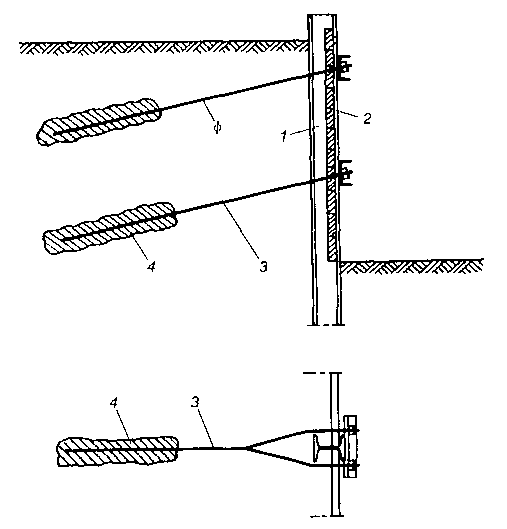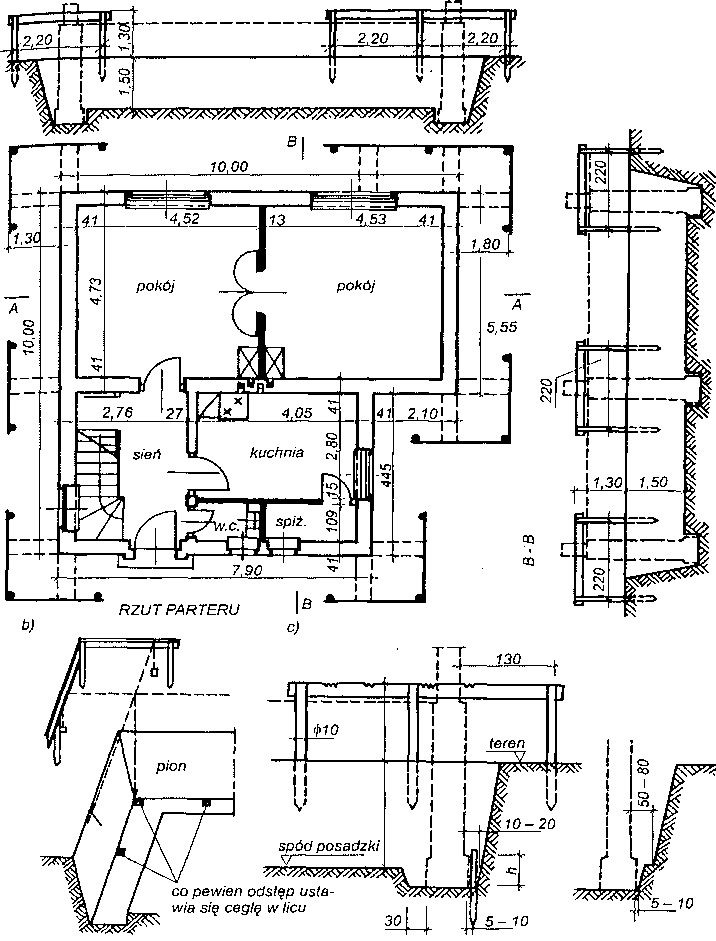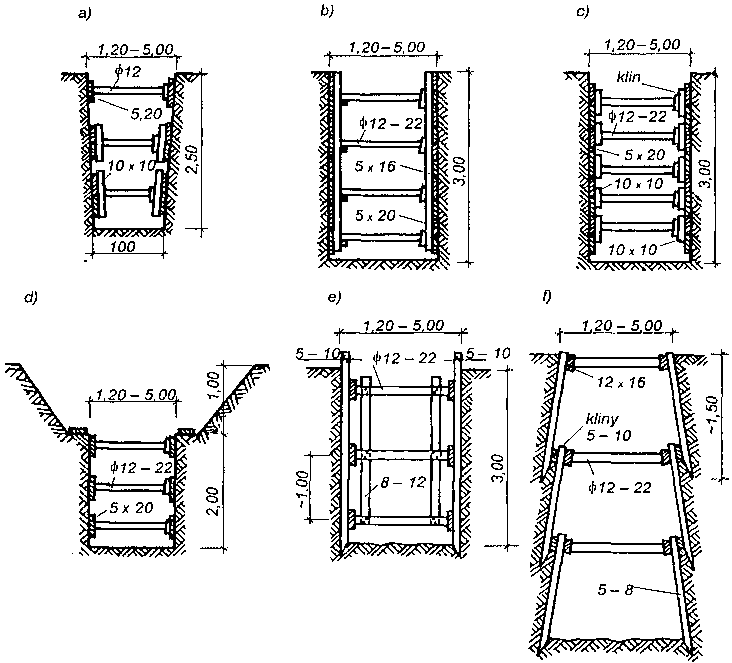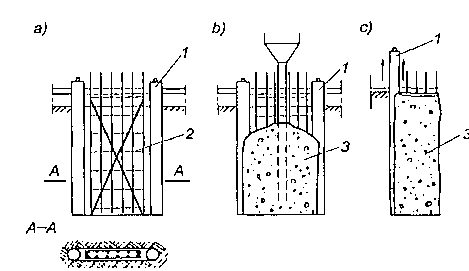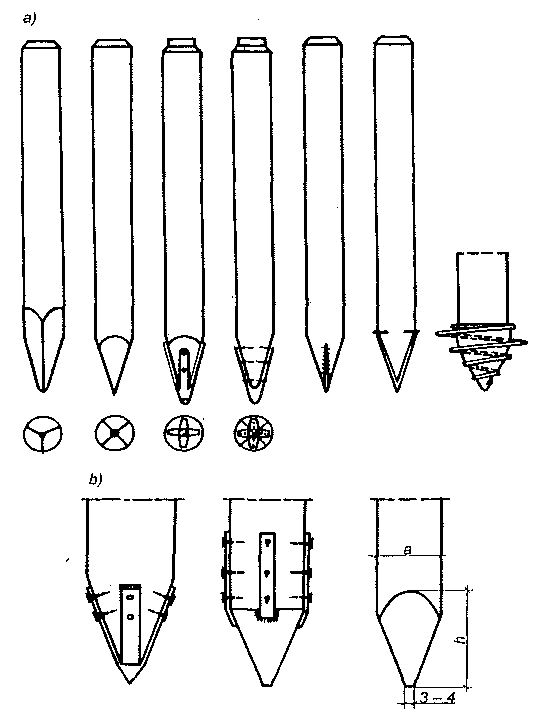Odwodnienie wykopów.
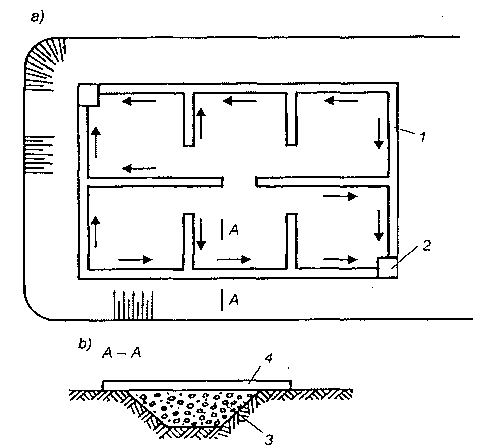 Odwodnienie wykopu: a) rozmieszczenie rowków, b) przekrój poprzeczny; 1 — rowek, 2 — studzienka, 3 — żwir, 4 — nakrycie z desek.
Odwodnienie wykopu: a) rozmieszczenie rowków, b) przekrój poprzeczny; 1 — rowek, 2 — studzienka, 3 — żwir, 4 — nakrycie z desek.
Wykopy budowlane należy chronić od spływu wód opadowych oraz napływu wód gruntowych, jeśli dno wykopu znajduje się poniżej poziomu wody gruntowej. Jeśli wykopy wykonywane są w gruntach spoistych i nieprzepuszczalnych (gliny, iły), wówczas wody opadowe spoza wykopu należy odprowadzać za pomocą rowów odprowadzających wykonanych poza obrysem wykopu.
Wody opadowe z dna wykopu oraz wody spływające z gruntu położonego powyżej dna, odprowadza się rowkami odpływowymi lub drenażem — ułożonym tymczasowo bądź na stałe — do studzienki zbiorczej, z której jest wybierana naczyniami lub pompą. Rowki w wykopie lub drenaż należy tak ułożyć, aby grunt pod fundamentami nie uległ naruszeniu, a przez to nie powodował dodatkowego osiadania fundamentów.
Jeśli wykop wykonywany jest w gruntach niespoistych (piaskach, żwirach) a dno wykopu znajduje się poniżej zwierciadła wody, to stosuje się wtedy obniżenie poziomu wody gruntowej przez depresję. Obniżenie poziomu wody można uzyskać przez zastosowanie studni rurowych o średnicy od 15 do 50 cm z filtrem w dolnej części, w której umieszczona jest rura ssawna, lub igłofiltrów, tj. studni małych średnic od 38 do 80 mm. Wydajność studni jest znacznie większa niż igłofiltrów, a ponadto woda wybierana jest z większej głębokości. Za pomocą filtrów igłowych można obniżyć poziom wody gruntowej o ok. 1,5—2,0 m przy rozmieszczeniu igłofiltrów nie większym niż 2,0 mm.
Obniżanie poziomu wody w gruntach pylastych za pomocą studni czy filtrów igłowych może spowodować wymywanie gruntu spod istniejącej w sąsiedztwie wykopu zabudowy. Jeśli takie zjawisko wystąpi, istniejące budynki mogą ulec uszkodzeniu (zarysowaniu) na skutek nierównomiernego osiadania.

